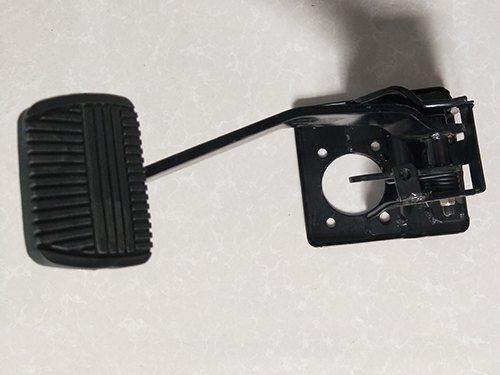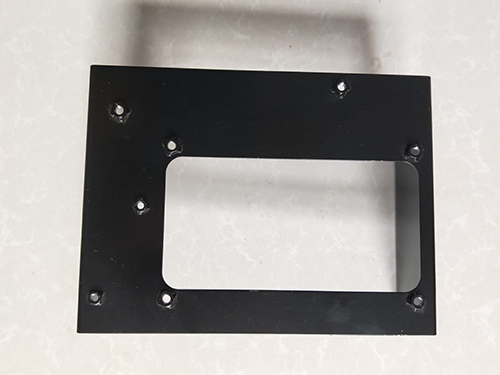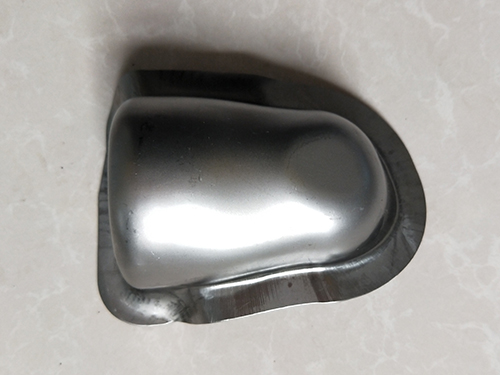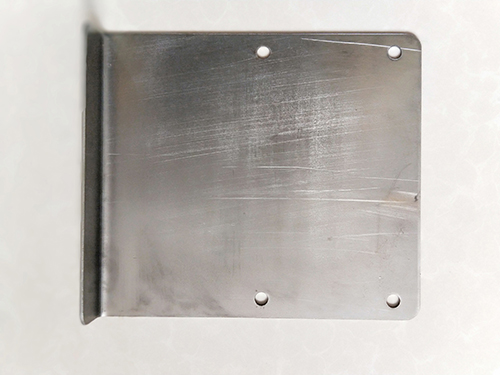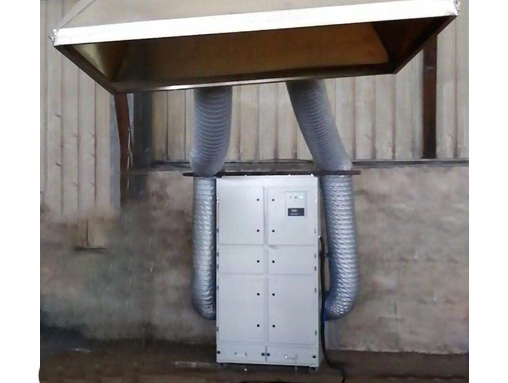Handling of Production Issues in Metal Stamping Parts and Production Stamping St
[1] 1. Processing of stamping parts production issues: Bonding and scratches: defects that occur on the surface of parts or molds due to friction between materials and convex or concave molds; 2. Burr: mainly occurs in the gap between the cutting die and the cutting die, and burrs are produced when the gap between the cutting edges is large or small; 3. Line offset: During the forming of the component, the part that first comes into contact with the mold is compressed and forms a line; 4. Convex concave: foreign objects (iron filings, rubber, dust) mixed into the unwinding line causing convex concave; 5. Turmoil: Due to uneven stress, poor matching of stretching ribs, or poor control of the press slide, the corners or embossed areas of the workpiece may experience twisting and strain; 6. Wrinkles: Wrinkles on the edges or r area are caused by poor adjustment of the press slider, low press accuracy, inappropriate adjustment of air cushion pressure, large punch or r area, and other reasons. 7. Other specific issues: In daily production, there may be situations where the punching size is too large or too small (possibly exceeding the specification requirements) and differs greatly from the size of the punch. In addition to considering factors such as the design size, processing accuracy, and punching gap of the forming punch and die, the following aspects should also be considered to solve them. 1) When the cutting edge wears out, the tensile stress on the material increases, and the tendency for the stamped part to flip and twist increases. When flipping materials, the punching size will tend to decrease. 2) The strong pressure on the material causes plastic deformation, which can lead to an increase in punching size. When reducing the pressure, the punching size will tend to be smaller. 3) The shape of the end of the convex die blade. If a slope or arc is made at the end, due to the reduced cutting force, the punching part is less likely to flip or twist, resulting in a larger punching size. When the end of the punch is flat (without a slope or arc), the punching size will relatively decrease. 8. Methods for producing flipping and twisting of stamped parts: 1) Reasonable mold design. In the progressive die, the arrangement of cutting sequence may affect the stamping parts; Precision of forming. For the cutting of small parts of stamped parts, it is generally recommended to first arrange a larger area for punching and cutting, and then arrange a smaller area for punching and cutting to reduce the impact of punching force on the forming of stamped parts. 2) Press down on the material. Overcoming the traditional mold design structure, a material holding gap is opened on the discharge plate (i.e. when the mold is closed, the material can be compressed). The key forming part, the discharge plate is made into an embedded structure to facilitate the solution of grinding (pressure) damage caused by long-term stamping at the pressing part of the discharge plate, which cannot compress the material. 3) Add strong pressure function. Thicken the size of the unloading insert pressing part (normal unloading insert thickness H+0.03mm) to increase the pressure on the material on the concave die side, resulting in flipping and twisting deformation of the stamped part during punching. 4) Trim a sloping or curved surface at the end of the convex die blade. This is a method to reduce the punching force. Reducing the buffer cutting force can alleviate the tensile force on the material on the concave die side, thereby achieving the effect of flipping and twisting the stamped part. 5) In daily mold production, attention should be paid to maintaining the sharpness of the cutting edges of the convex and concave molds. When the cutting edge wears out, the tensile stress on the material will increase, leading to an increased tendency for the stamped part to flip and twist. 6) Unreasonable or uneven punching gaps are also reasons for the flipping and twisting of stamped parts, which need to be overcome. [2] During the entire process of producing stamped parts for automobiles, the cost of stamped sheet metal accounts for about 36% of the cost of the car's body in white. For every 1% increase in the utilization rate of the entire vehicle's materials, the material and process consumption of the vehicle will be reduced by about 10kg, and the cost per vehicle can be reduced by 55 yuan. Japanese and Korean car companies are significantly better than domestic car companies in terms of material utilization rate, and have obvious advantages in cost control. Using the material utilization rate of the same 20 key stamping parts on the car body as the calculation caliber, Toyota in Japan can reach a better state of 63%, Hyundai in South Korea can reach a better state of 60%, while the vast majority of domestic car companies have a utilization rate of 52% to 57%, which is significantly lower than that of Japanese and Korean car companies. According to the analysis of synchronous engineering, as the utilization rate reaches over 54%, the difficulty of improvement becomes increasingly high. It is necessary to invest time and manpower in the early stages of design and conduct in-depth research on how to improve synchronous engineering in the early stages. Metal stamping parts; The material utilization rate involves a wide range of aspects, including the overall shape and seam of the vehicle body, the new structure of the product, the preparation of stamping processes, the setting of stamping die surfaces, the selection of roll material specifications, the improvement of mold structure, stamping equipment, debugging stage, and production stage. Among them, the overall shape and structure of the product itself have a key impact on the material utilization rate. The process of improving material utilization can be divided into five stages: Stage 1: SE (Synchronous or Parallel Engineering) stage; Phase 2: Design co signing phase; Phase 3: Pre acceptance stage; Stage 4: Precision Recovery Stage; Stage 5: Stable mass production stage. The most influential ones are the stage 1 SE and stage 2 design co signing. The unreasonable structural design of stamped parts determines the low material utilization rate, and due to the low material utilization rate caused by the structural design of stamped parts, it cannot be improved. The shape of stamped parts determines the upper limit of material utilization rate, so whether stamped parts are used or not determines the high or low final material utilization rate. 1. The reasonable shape of stamping parts can be optimized as much as possible through SE engineering research on stamping part structure, layout, and other methods to optimize the material utilization rate of each stamping part. The materials combined in Scheme 2 shown in Table 1 have a low material utilization rate for the shape, while the materials for conventional design are shown in Table 2. Therefore, choosing a reasonable shape structure during the stamping part design phase is very important and directly affects the overall manufacturing cost of the vehicle. 2. Reasonably dividing stamping parts through discussions with departments, optimizing the structure as much as possible in the early design stage of stamping parts while meeting their performance requirements, to achieve maximum material utilization of the parts, as shown in Figure 3. The protruding data at both ends of stamped parts is not conducive to the formulation of later mold processes and also affects material utilization.

